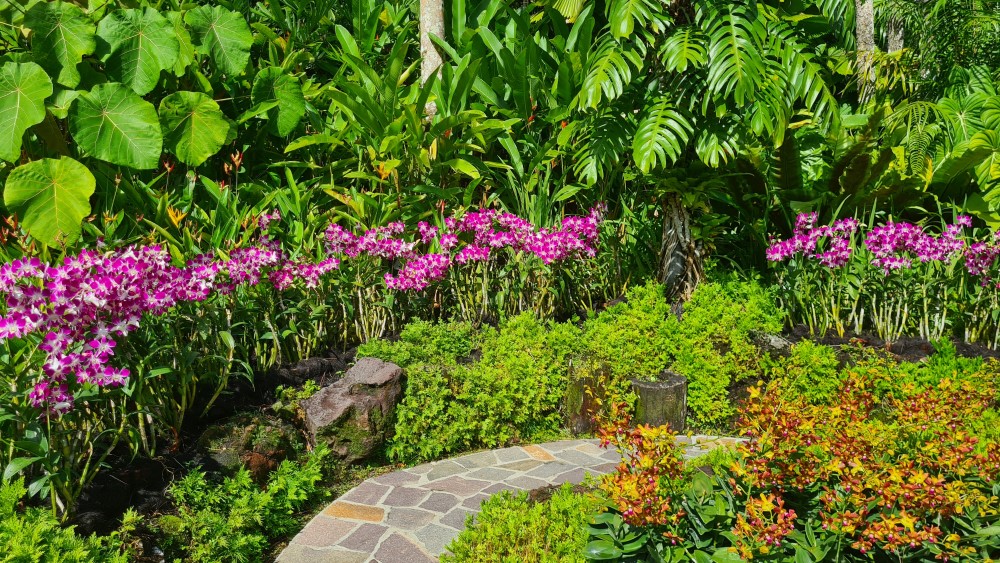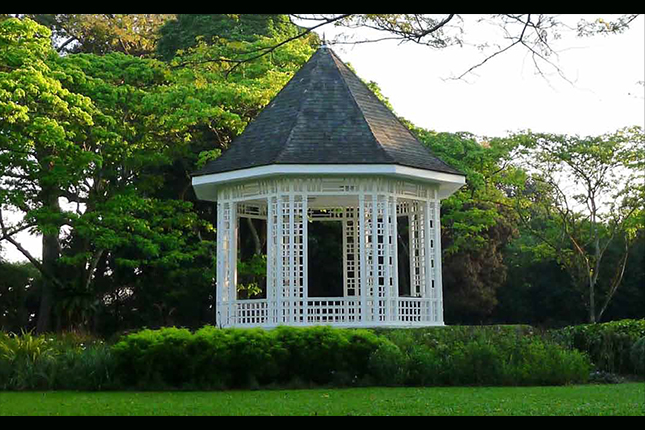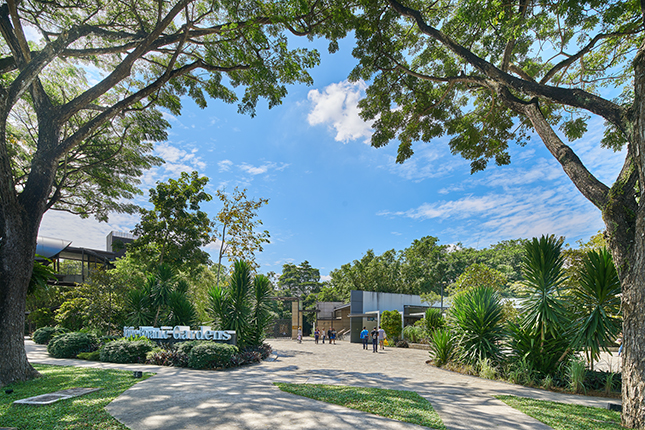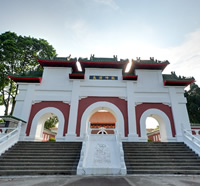Orchid Cultivation
Orchids belong to one the most diverse families of flowering plants in the world, with more than 25,000 recorded species, of which about 220 species are native to Singapore, although only about 60 species remain extant (i.e. surviving in Singapore, not extinct).
Orchids have been intertwined with the history, culture and commerce of Singapore and the region, with the Singapore Botanic Gardens (SBG) playing a central role. It was in 1859 that the Gardens at its present site was founded and laid out in the English Landscape Movement’s style by an Agri-Horticultural society. The Gardens was handed over to the British colonial government in 1874 and Henry James Murton served as the Gardens’ first Superintendent from 1875 to 1880. During this period, he founded the herbarium and library, introduced and trialled many new economic plant species, and established the first collection of orchids, transforming the Gardens into a place of botanical study. Thus began the transformation of the Singapore Botanic Gardens into the public institution and UNESCO World Heritage Site, as we know it today.
Orchid cultivation in Singapore reached its peak during the 1950s to 1980s, facilitated by research and hybridisation programmes. During that time, orchids were seen as status symbols.
Today, Singapore is a world-renowned orchid cultivation and hybridisation centre. The local orchid industry is buoyed by public and private efforts as well as synergistic associations between the two. The National Parks Board (NParks)—the parent organisation of SBG, Orchid Society of South East Asia, Singapore Orchid Growers’ Association and privately owned orchid nurseries are key players in promoting Singapore’s orchid industry both locally and internationally.
Geographic Location
Orchids can be found in all parts of the world except the icy regions of the Arctic and Antarctic. Many countries have orchids as their national flower; Singapore’s national flower is Vanda Miss Joaquim.
Phalaenopsis hybrids can be purchased from nurseries, florists and supermarkets around the world, leading some to identify them as “supermarket orchids”.
As of 2019, there are around 15-20 orchid nurseries scattered across the island in Singapore that breed, sell, and/or export orchids. The National Orchid Garden (NOG), housed within the Singapore Botanic Gardens, possesses one of the largest orchid collections in the world, with more than 1,000 species of orchids and about 2,000 hybrids.
Communities Involved
Community groups, private and public sectors are involved in the practice of orchid cultivation.
For example, The Orchid Society of South East Asia (OSSEA) promotes the conservation, hybridisation, and cultivation of orchids.The Singapore Orchid Growers' Association (SOGA) is another group made up of local orchid growers who seek to exchange ideas and share knowledge.
There are also various gardening interest groups and individuals who grow orchids as a hobby and as a form of enjoyment. Orchids are also commonly grown by home owners and in community gardens as part of the Community in Bloom Initiatives.
Associated Social and Cultural Practices
Orchids hold significant religious, cultural, horticultural and agricultural value around the world. Prized orchids are those that possess good shape, fragrance and colour, and are long-lived and free-flowering. Orchids are also used in traditional Chinese medicine for treating ailments such as fever, dizziness and headaches. Orchids are the preferred flowers used in flower garlands for secular events, due to their colour and relatively neutral scent.
In Singapore, Vanda Miss Joaquim was among the popular hybrids that were first exported, and continues to be the most well-known of local orchids. The hybrid was selected as Singapore’s national flower in 1981. A vigorous and free flowering orchid hybrid, Vanda Miss Joaquim was described and named by H.N. Ridley, then Director of the Singapore Botanic Gardens, in the Gardeners’ Chronicle, 24 June, 1893. There, Ridley stated: “A few years ago Miss [Agnes] Joaquim, a lady residing in Singapore succeeded in crossing Vanda Hookeriana and Vanda teres, two plants cultivated in almost every garden in Singapore.”.
A distinct practice in Singapore is “orchid diplomacy” — where new orchid hybrids are named after individuals such as foreign dignitaries, as a sign of goodwill. Singapore Botanic Gardens play a key role in facilitating these and in hosting the orchid-naming ceremonies, with over 200 orchids named after dignitaries to date.
Orchids have also been integrated into local designs and lifestyle products. For example, local hybrids, such as Dendrobium Tay Swee Keng and Dendrobium Eleanor Chan, have been incorporated into jewellery designs.
Experience of Practitioner
Mr Koh Keng Hoe had a love for flowers since his teenage years. He started growing his own orchids when he was 17, growing orchids on discarded coconut husks that had been discarded. It was not until 1954, when he was 24, that he became a professional orchid breeder.
Mr Koh travelled to Hawaii in the early years of his career and acquired local orchid hybrids, bringing them back to Singapore. Among his successes as an orchid breeder was growing the Vanda "Tan Chay Yan cross" seedlings, which were in particularly high demand at that time. He is generally optimistic about the practice of orchid cultivation in Singapore - whether as a hobby or professionally - and belives it will continue for a long time.
Another prominent practitioner in the field of orchid cultivation is Mr Syed Yusof Alsagoff. He was conferred the Stewards of Intangible Cultural Heritage Award in 2022 for his extensive contribution to orchid hybridisation, breeding, and conservation in Singapore for over six decades. His expertise is reflected in his long-standing service on the Executive Committee of the Orchid Society of Southeast Asia (OSSEA) from 1964 to 1997, including a 14-year tenure as President. He has also been involved with the Singapore Botanic Gardens' orchid programme since the 1960s, and played an instrumental role in the development of the National Orchid Garden. To date, he has registered over 200 orchid hybrids, including Aranda Zahela Alsagoff which was named after his wife and was the first orchid hybrid to ever receive a First-Class Certificate from OSSEA. He continues to share his knowledge with the local orchid growing community through OSSEA's monthly meetings, and provides advice to young and budding orchid breeders and enthusiasts. Today, he continues his efforts to grow interest in orchid cultivation and impart his knowledge in the practice.
Viability and Future Outlook
Orchid cultivation as a hobby is accessible as the barriers to entry for hobbyists are low, that anyone can grow orchids in their garden or apartment.
NParks is the leading agency in the management of the orchid sector and is working closely with relevant parties to conserve Singapore’s native orchid species and to chart the orchid sector’s future direction.
There are many activities and platforms for different gardening interest groups to gather and exchange knowledge, such as the annual Singapore Garden Festival and Singapore Orchid Show, the monthly Gardeners’ Day Out event at HortPark, the Community in Bloom programme, and publications such as Gardenwise and Gardens’ Bulletin Singapore published by SBG, and the Malayan Orchid Review, published by OSSEA.
OSSEA brings orchid enthusiasts together through talks and flower shows. Their membership provide access to a community to network and learn from fellow orchid enthusiasts. These sustained efforts play a key role in safeguarding orchid cultivation, ensuring that knowledge and skills are passed down through generations of orchid lovers and enthusiasts.
References
Reference No.: ICH-079
Date of Inclusion: October 2019; Updated March 2025
References
Bulpitt, Christopher, Yan Li, Bulpitt Pauline F. & Wang Jiguang. “The use of orchids in Chinese medicine”, J R Soc Med 100(12): 558–563, 2007.
Goh, Chong Jin and Lee G. Kavaijian. “Orchid Industry of Singapore”, Economic Botany 43(2): 241–254, 1989.
Choy, Sin Hew & Yong, Jean W H. “Orchids in Chinese Medicine”, Innovation Magazine, January 2006.
Ministry of National Development. “A lifetime of blooming passion”, Happy Hands 9: 4–5, 20 September 2015, https://www.mnd.gov.sg/docs/default-source/mnd-documents/publications-documents/happy-hands-building-an-endearing-home-issue-9-an-e-newsletter-for-friends-of-the-mnd-family.pdf. Accessed 26 June 2018.
National Parks Board. “Vanda Miss Joaquim – Our National Flower”, https://www.nparks.gov.sg/activities/family-time-with-nature/recommended-activities/vanda-ms-joaquim. Accessed 1 August 2018.
Roy, Somali. “The Orchid Olympics”, Smithsonian.com, February 2012, https://www.smithsonianmag.com/science-nature/the-orchid-olympics-19497303/. Accessed 11 June 2018.
Yam, Tim Wing. Native Orchids of Singapore. Singapore: National Parks Board, 2013.


















